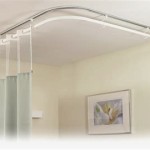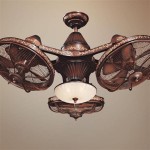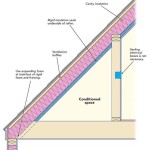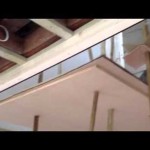How to Fix Ceiling Air Vents: A Comprehensive Guide
Ceiling air vents play a crucial role in maintaining comfortable indoor temperatures and ensuring proper air circulation throughout a building. They are integral components of heating, ventilation, and air conditioning (HVAC) systems. Over time, these vents can become damaged, inefficient, or simply require adjustment. Addressing these issues promptly is essential for optimizing HVAC performance and preventing potential problems such as uneven temperature distribution, increased energy consumption, and compromised air quality. This article provides a comprehensive guide to diagnosing and resolving common problems associated with ceiling air vents.
Understanding Air Vent Function and Common Issues
Ceiling air vents are designed to distribute conditioned air evenly throughout a room. They typically consist of a grille or diffuser attached to a duct that connects to the central HVAC system. The grille controls the direction and velocity of the airflow, influencing how effectively the room is heated or cooled. Various factors can contribute to problems with ceiling air vents, including:
Dust and Debris Accumulation: Over time, dust, dirt, and other airborne particles can accumulate on the vent grille and within the ductwork. This buildup restricts airflow, reduces vent efficiency, and can contribute to poor air quality. Dust accumulation can also create a breeding ground for allergens and other contaminants.
Damaged or Misaligned Grilles: Physical damage to the vent grille, such as bent fins or broken components, can disrupt the airflow pattern and diminish the vent's effectiveness. Similarly, misaligned grilles can direct air unevenly, leading to hot or cold spots in the room.
Leaky Ducts: Air ducts hidden above the ceiling are susceptible to leaks, particularly at joints and seams. Leaks cause a loss of conditioned air, reducing the system's overall efficiency and leading to higher energy bills. Leaky ducts can also draw in dust and pollutants from the attic or ceiling space, compromising indoor air quality.
Improper Vent Size or Placement: Air vents that are too small for the room or improperly positioned can struggle to effectively distribute conditioned air. This can result in temperature imbalances and discomfort.
Restricted Dampers: Many ceiling air vents include dampers, adjustable plates that control the amount of airflow through the vent. If the damper is closed or partially blocked, it will restrict airflow and reduce the vent's output.
Troubleshooting and Diagnosing Ceiling Air Vent Problems
Before attempting any repairs, it is crucial to accurately diagnose the problem affecting the ceiling air vent. This involves a systematic approach to identify the underlying cause and determine the appropriate course of action. Several diagnostic techniques can be employed:
Visual Inspection: Begin by thoroughly inspecting the air vent for any visible signs of damage, such as cracks, bends, or missing components. Check for excessive dust accumulation on the grille and within the vent opening. Assess the alignment of the grille and ensure it is securely attached to the ceiling.
Airflow Assessment: Feel the airflow coming from the vent. Compare the airflow from different vents in the building to identify any discrepancies. If a vent is producing significantly less airflow than others, it may indicate a clogged duct, a restricted damper, or a leaky connection.
Temperature Measurement: Use a thermometer to measure the temperature of the air coming from the vent. Compare this temperature to the thermostat setting and the temperature of air from other vents. A significant difference may suggest a problem with the HVAC system or the ductwork leading to the vent.
Ductwork Inspection (If Accessible): If possible, inspect the ductwork connected to the vent for any signs of leaks, damage, or insulation problems. Look for gaps, cracks, or loose connections at joints and seams. Feel for air escaping from the ductwork, which can indicate a leak.
Professional HVAC Inspection: For complex or persistent problems, it is advisable to consult with a qualified HVAC technician. A professional can perform a comprehensive inspection of the entire HVAC system, including the ductwork, to identify the root cause of the problem.
Step-by-Step Guide to Common Air Vent Repairs
Once the problem has been diagnosed, the next step is to implement the appropriate repair solutions. The following section provides a step-by-step guide to addressing common issues associated with ceiling air vents.
Cleaning a Dusty Air Vent:
Materials Required: Vacuum cleaner with brush attachment, screwdriver, mild detergent, warm water, soft cloth or sponge.
Procedure:
- Turn off the HVAC system to prevent dust from being circulated during the cleaning process.
- Carefully remove the vent grille from the ceiling using a screwdriver. Note the orientation of the grille for easy reinstallation.
- Use a vacuum cleaner with a brush attachment to remove loose dust and debris from the grille and the vent opening.
- Wash the grille with mild detergent and warm water. Use a soft cloth or sponge to scrub away any stubborn dirt or grime.
- Rinse the grille thoroughly with clean water and allow it to air dry completely.
- While the grille is drying, use the vacuum cleaner to remove any remaining dust and debris from the vent opening in the ceiling.
- Once the grille is completely dry, reinstall it in the ceiling, ensuring it is properly aligned and securely fastened.
- Turn the HVAC system back on and test the airflow from the vent.
Repairing a Damaged or Misaligned Grille:
Materials Required: Screwdriver, pliers, replacement grille (if necessary).
Procedure:
- If the grille is bent or misaligned, gently attempt to straighten it using pliers. Be careful not to apply excessive force, which could cause further damage.
- If the grille is cracked or broken beyond repair, it will need to be replaced. Purchase a replacement grille that is the same size and style as the original.
- Remove the damaged grille from the ceiling using a screwdriver.
- Install the new grille in the ceiling, ensuring it is properly aligned and securely fastened.
Sealing Leaky Ducts (Minor Leaks):
Materials Required: Foil tape, mastic sealant, brush.
Procedure:
- Locate the area where the duct is leaking.
- Clean the area around the leak to remove any dust or debris.
- Apply foil tape over the leak, ensuring it is tightly sealed.
- For added protection, apply a layer of mastic sealant over the foil tape. Use a brush to spread the sealant evenly.
- Allow the sealant to dry completely before turning on the HVAC system.
Note: For major duct leaks or extensive damage, it is best to consult with a professional HVAC technician. Attempting to repair these problems without the proper knowledge and equipment can be dangerous and may not effectively resolve the issue.
Adjusting Dampers:
Materials Required: Screwdriver (if necessary).
Procedure:
- Locate the damper control on the air vent. This may be a lever, a knob, or a screw.
- Adjust the damper to increase or decrease the airflow from the vent. Turning the damper in one direction will typically increase airflow, while turning it in the opposite direction will decrease airflow.
- Test the airflow from the vent after each adjustment to ensure it is properly balanced.
Addressing Improper Vent Size or Placement:
If the air vent is too small for the room or is improperly positioned, it may be necessary to replace it with a larger vent or relocate it to a more effective location. This is a more complex repair that may require the assistance of a professional HVAC technician.
Materials Required: Replacement vent (if necessary), measuring tape, screwdriver, drill (if necessary).
Procedure:
- Measure the existing air vent opening to determine the size of the replacement vent needed.
- Purchase a replacement vent that is the appropriate size and style for the room.
- If the air vent needs to be relocated, carefully plan the new location, ensuring it will effectively distribute conditioned air throughout the room.
- Remove the existing air vent from the ceiling.
- Install the new air vent in the ceiling, ensuring it is properly aligned and securely fastened. This may require drilling new holes in the ceiling.
Additional Considerations:
Safety Precautions: Always turn off the power to the HVAC system before performing any electrical work. Wear safety glasses and gloves to protect yourself from dust, debris, and sharp objects.
Professional Assistance: For complex or potentially hazardous repairs, it is always best to consult with a qualified HVAC technician.
Preventive Maintenance: Regularly clean air vents and inspect ductwork to prevent future problems. Change air filters in the HVAC system regularly according to the manufacturer's recommendations.

Replacing A Heat Vent Register

Quick Ceiling Vent Fix

How To Replace Your Ac Vent Covers Clf Services

How To Open And Close Ceiling Air Vents

3 Ways To Fix Water Stains On Your Ceiling Air Conditioning Vents Baylor Heating Inc

A Step By Guide To Replacing Your Ceiling Vent Air Filter

Quick Ceiling Vent Fix

Fix Or Replace Broken Ceiling Vent Stuck Open Closed

Ceiling Vent Replacement For Air Conditioning Hq Joondalup Perth Wa

How To Remove Mold In Ac Ducts Forbes Home
Related Posts








